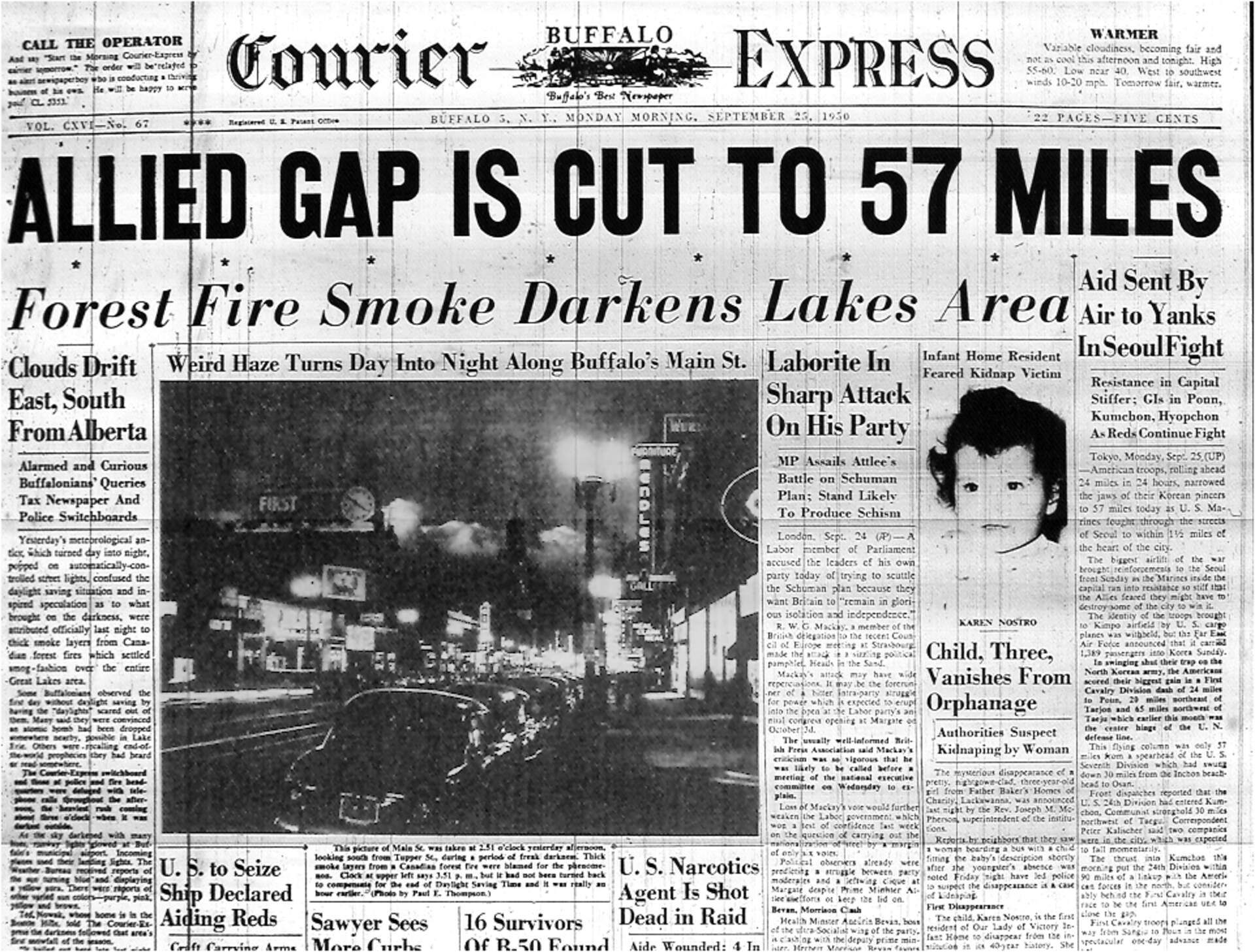
Buffalo Courier-Express September 25, 1950
The Day the Sun Disappeared—September 24, 1950
Wednesday, Sep 24, 2014
Many of Burchfield’s observations of weather fell closely in line with the observations of scientists and the data that they recorded. One such event was only recorded in his journals. In the early afternoon of September 24, 1950, the sky turned black over much of the northeastern United States. Burchfield wrote:
Dark and cold. It was not until noon that I first noticed the strange yellow light outside. It kept getting darker and darker. The strange hot tawny color at the zenith, had the quality of a yellow august afterglow, yet different. By 2:00 P.M. it was almost like night. In the west deep blue black clouds, then the sky went from mars violet up to tawny orange – lower clouds white and cold. In the S.E. brilliant yellow light at the horizon.[i]
A local national weather service logbook from that week tells a similar story:
“Between 1400 and 1600 EST light from the sky was diminished to the dimness of twilight (or pre-dawn). The sky was chaotic with mammato forms showing where the obscurement appeared thickest, while to the northeast a streak of clear bright sky continued until about sunset time. Street lights came on. Artificial lights where needed for all purposes.” [ii]
One can only imagine the sensation and confusion people must have felt on that afternoon. On that Sunday, Major League Baseball’s day games in Pittsburgh and Cleveland were played under lights. The Buffalo Courier-Express received reports of “the sun turning blue and displaying a yellow aura. There were also reports of other varied sun colors — purple, pink, yellow and brown.” [iii] The strange event was attributed to smoke drifting down from forest fires in Alberta, Canada. The weird hues noted by observers can be attributed to the uniformly fine particles within the smoke layer. The very fine smoke particles aloft scattered the sun’s light, dispersing the red and yellow light which accounts for most of its visible spectrum, allowing only the shorter wavelengths of blue and magenta to penetrate through. Thus, wherever the sun or moon were visible, they were painted with hues of blue, pink or purple. [iv]
[i] Burchfield, Journals, vol. 51 (September 24, 1950): 103-4.
[ii] U.S. Department of Commerce, Met’l Record, Surface Weather Observations Greater Buffalo International Airport, July- December 1950
[iii] “Forest Fire Smoke Darkens Lakes Area, Clouds Drift East, South From Alberta” Buffalo Courier Express 25 November 1950: A1. Print.
[iv]Stephen Vermette, “The Afternoon the Sun Disappeared over Western New York” Western New York Heritage Spring 2011; 58-61